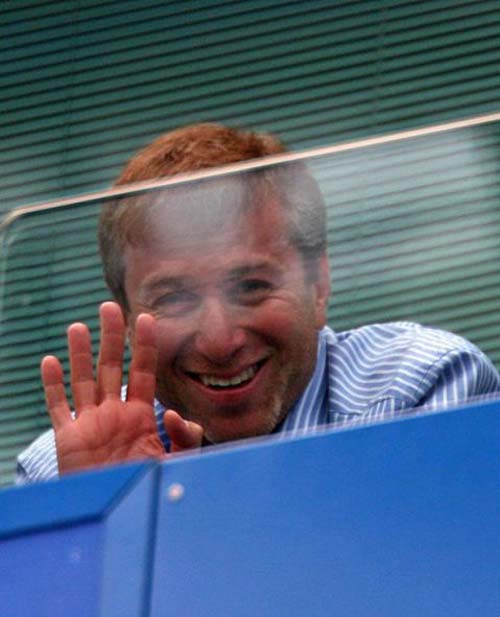Abramovich chips in for statue of rugby hero

Perhaps it was their joint fate in leaving Russia for a high-profile existence in British sport, or maybe it was their shared passion for the finer things in life. Roman Abramovich, sometime oligarch and football fan, has found common cause with a Tsarist émigré who secured fame as the fleet-footed architect of the first English victory over the New Zealand All Blacks.
The billionaire owner of Chelsea FC has overlooked the fact that Prince Alexander Obolensky favoured the oval rugby ball over his preferred spherical football to become the latest donor to a £50,000 appeal to erect a statue in Ipswich to the young compatriot who became known as the "Flying Russian".
Mr Abramovich, recently displaced as Britain's richest man by the Indian steel magnate Lakshmi Mittal, is understood to have given £5,000 of his £11bn fortune to commemorate Obolensky, a dashing socialite who breakfasted on champagne and oysters, and left Oxford University with a fourth- class honours degree.
The son of an officer in Tsar Nicolas's Imperial Guard, Obolensky scored two tries during his debut performance at 19 for England during their 13-0 defeat of the All Blacks at Twickenham in 1936. His second try, which followed an amazing run across the pitch in defiance of rugby-playing convention, is considered to be among the finest ever scored.
Sadly, the glorious sporting career awaiting the Russian, who did not secure British citizenship until after his first appearance for England, was cut short on 29 March 1940 when the Hurricane fighter he was flying during his RAF pilot training crashed as he was landing at Martlesham Heath airfield near Ipswich. He is buried in the town's war cemetery. He was 24.
A total of £40,000 for the statue has been raised so far, including a £20,000 donation from an Ipswich businessman and £5,000 from the Rugby Football Union. About 300 smaller donations have also been received, many from the widows of Second World War airmen and former team-mates of Obolensky.
James Hehir, the chief executive of Ipswich Borough Council and the self-confessed rugby obsessive who started the fundraising, said: "Mr Abramovich's support is a big boost for us; we are almost at the point where we can bring this project to reality. What is remarkable is the way we have attracted support from so many sources. I have received wonderful letters from the widows of pilots and some of his former team-mates. One woman wrote that if her husband was still alive, he would have sold all the furniture in the house to ensure the statue was built."
It is hoped work on the statue, which will aim to capture Obolensky's phenomenal speed in an unconventional manner, will begin this summer. It is to be placed in the historic centre of Ipswich, which already houses monuments to its football heroes, Sir Alf Ramsey and Sir Bobby Robson.
Obolensky, born in St Petersburg to a life of aristocratic privilege, came to Britain as a baby with his parents as they fled the Russian Revolution in 1917. He was sent to a private school in Derbyshire and attracted the attention of England's rugby selectors while at Brasenose College, Oxford. What he lacked in academic acumen by achieving a "sportsman's first" in politics, philosophy and economics, he made up for in sporting prowess.
On 4 January 1936, he took to the field at Twickenham as the first Russian to play for England and spearheaded the home side's unprecedented defeat of the All Blacks, hitherto considered invincible.
The Flying Russian also set a world record of scoring 17 tries in a single game during a tour of South America before he joined the RAF.
Join our commenting forum
Join thought-provoking conversations, follow other Independent readers and see their replies
Comments